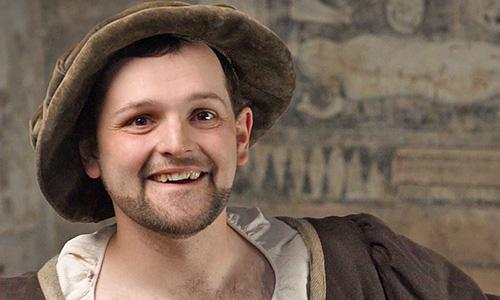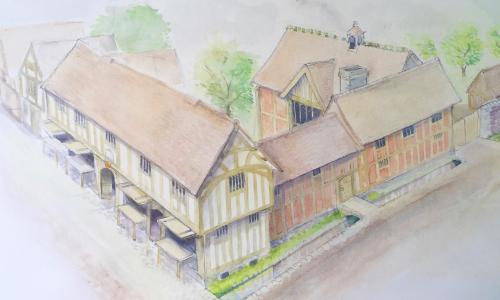Hugh Clopton (c.1440-1496) was the younger son of John and Agnes Clopton, a local manorial family based in the village of Clopton just outside Stratford-upon-Avon. As the younger son, Hugh did not expect to inherit and he became apprenticed to a London mercer, John Roo, in 1456/7. He rose through the ranks becoming a member of the Company of Mercers in 1463/4, where he was a warden in 1479, 1484 and 1488. He became Sheriff of London in 1486 and Mayor in 1491.
Like many fellow mercers, Clopton travelled extensively, and combined business with politics, acting as an envoy for Richard III to negotiate with the Duke of Burgundy over the restraint of trade. This led to trouble, as Clopton was later discovered trying to smuggle £3000 of goods into England, and he had to submit himself to their judgement - which resulted in him giving the Company an expensive ‘hallyng of Arras’, bankers and cushions for their guildhall.
This rather humiliating experience might have encouraged Clopton to spend more time in Stratford-upon- Avon, where he began to make his mark rebuilding his New Place property and replacing the timber bridge over the river with a magnificent stone structure. He also funded additions to the parish church.
However, Clopton never seemed to be where he was needed when he was elected to office. He served in absentia as Master of the Holy Cross Guild in 1486-7 and again in 1487-8. In 1491, when he was elected Lord Mayor of London, he had to be summoned back to the city from Warwickshire. He was met outside the city by twenty four freemen who rode with the last ten miles of his journey.
Hugh never married and his will left an astonishing legacy not just for his great-nephew and heir, William Clopton, but also for the rebuilding of Stratford's Guild Chapel, and further additions and alterations to the parish church, reinforcing his memory in the town. Prayers and masses were said in the leading London monastic houses of the day and many closer to home, as well as in the Guild Chapel and Holy Trinity church.
Bequests were also made to poor maidens and householders, as well as scholars. Clopton’s mercantile misdemeanours still appear to have been weighing on his mind: funds were also left to the London chamber, the mercers’ common box, the merchant adventurers of Zeland, Braband and Flanders and the Staple of Calais, ‘for disobedience of my oath that I should have observed and did not, or else misused’ and for other ‘disobedience or ordinance broken’. His executor was his former apprentice and friend, Thomas Hannys, who was inspired by Clopton’s legacy to leave his own mark by rebuilding the almshouses, when he died in 1502.
Our trail is set in c.1510, when the Guild Chapel, almshouses and further work at Holy Trinity would have been completed, ready for painting by our apprentice painter, Kit. Find out more about Kit on our Meet Kit page.







